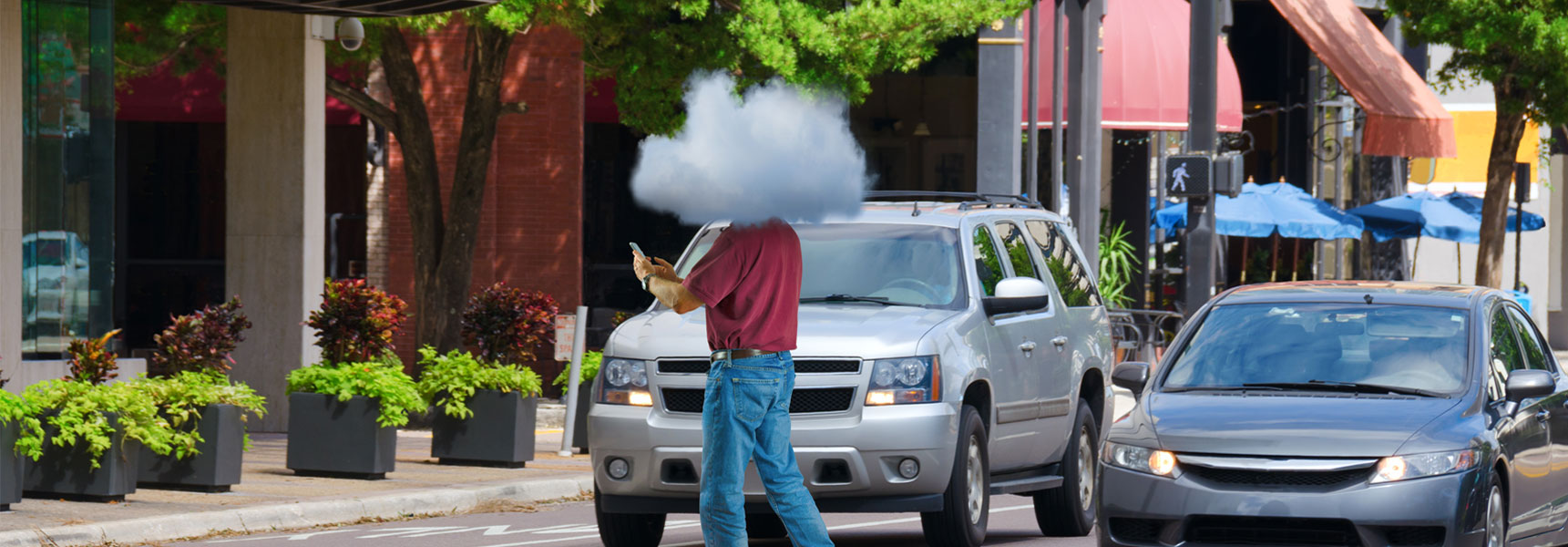Pedestrian Safety - Are You a Jaywalker?

Only the history buffs among us would know the origin of the descriptive term, “jaywalker.” I’ll leave it to Merriam-Webster to describe the origin and original meaning as well as how we’ve gotten to the current understanding. Follow the link to read about it- seems that we have always had walkers, and drivers, who for whatever reason couldn’t follow the rules. It was as annoying in 1905 as it is today. The bottom line is that if you aren’t following the traffic laws and exhibiting some decent hazard awareness, you’re probably a jaywalker.
As with most traffic fatality numbers, pedestrian deaths were on the decrease for many years, but in the last few years that trend has reversed. In fact, according to the Insurance Institute for Highway Safety (IIHS), pedestrian deaths have increased 46 percent since reaching their lowest point in 2009. 2016 fatalities were the highest since 1990 with 5,987 pedestrians killed in traffic collisions.
Road design, better lighting, speed enforcement, and vehicle design are all areas that could be improved and result in fewer pedestrian collisions, or less severe injuries if a vehicle strikes a pedestrian. However, we should all remember the basics we learned, or should have learned, in grade school. A pedestrian is responsible for following the traffic laws and exhibiting good awareness. That’s a technical way to say that pedestrians should:
- Cross roadways only in designated cross walks.
- Follow the traffic light guidance.
- Look both ways before entering the roadway. Never assume drivers see you!
- Avoid crossing in dark or poorly lit areas. If necessary to do so, wear lighter clothing or even reflective garments.
When was the last time you ran across the road mid-intersection? Crossed against the light? Entered a crosswalk without even looking to see if the traffic was yielding? Had your eyes locked on your cell phone instead of the passing traffic? These are the behaviors that lead to collisions and are within the pedestrian’s control. We all would like to see drivers following the rules as well. Clearly the burden falls on both drivers and pedestrians to avoid disastrous collisions. Distracted driving is a significant problem, but so is distracted walking.
I recently witnessed a pedestrian walk right into the side of a car that was stopped at a red light. A sad example of how removed from the real world we can be when our focus is on our smartphone. Some people maintain that phone distraction is no different from the distraction caused by a person walking with you. My response is pretty simple. Can you imagine a person walking with you being so distracting that you would walk into a stopped car in the street? I don’t think so.
Car technology is getting better, roadways are more clearly marked, and speed limits are in place to slow down drivers where pedestrians are likely (think school zone 15MPH limits). But I’d rather not rely on these features to keep me safe when I can take a big step toward safety myself (yes, a pedestrian pun). I’ll follow the traffic rules, keep my head out of my phone, and be sure drivers see me before I ever step onto the roadway. I’d rather take a few more minutes and cross the road safely than run across the road mid-intersection and be hit by the speeding motorist. Hopefully you see the choice just as clearly.
For more information, check out the resource page on pedestrian safety from the National Safety Council as well as our resources for MEMIC policyholders within the Safety Director at MEMIC.com.
By Randy Klatt

